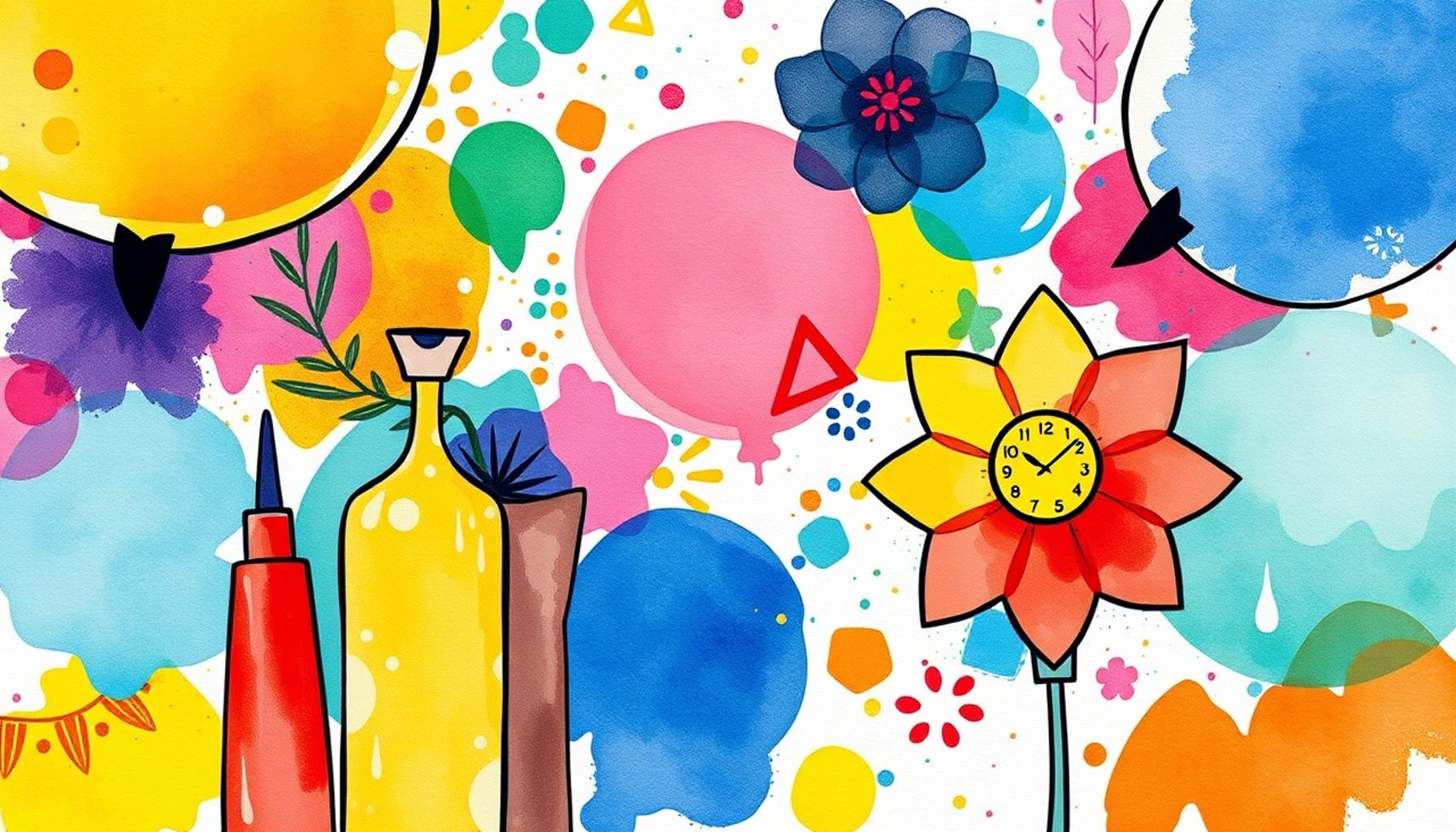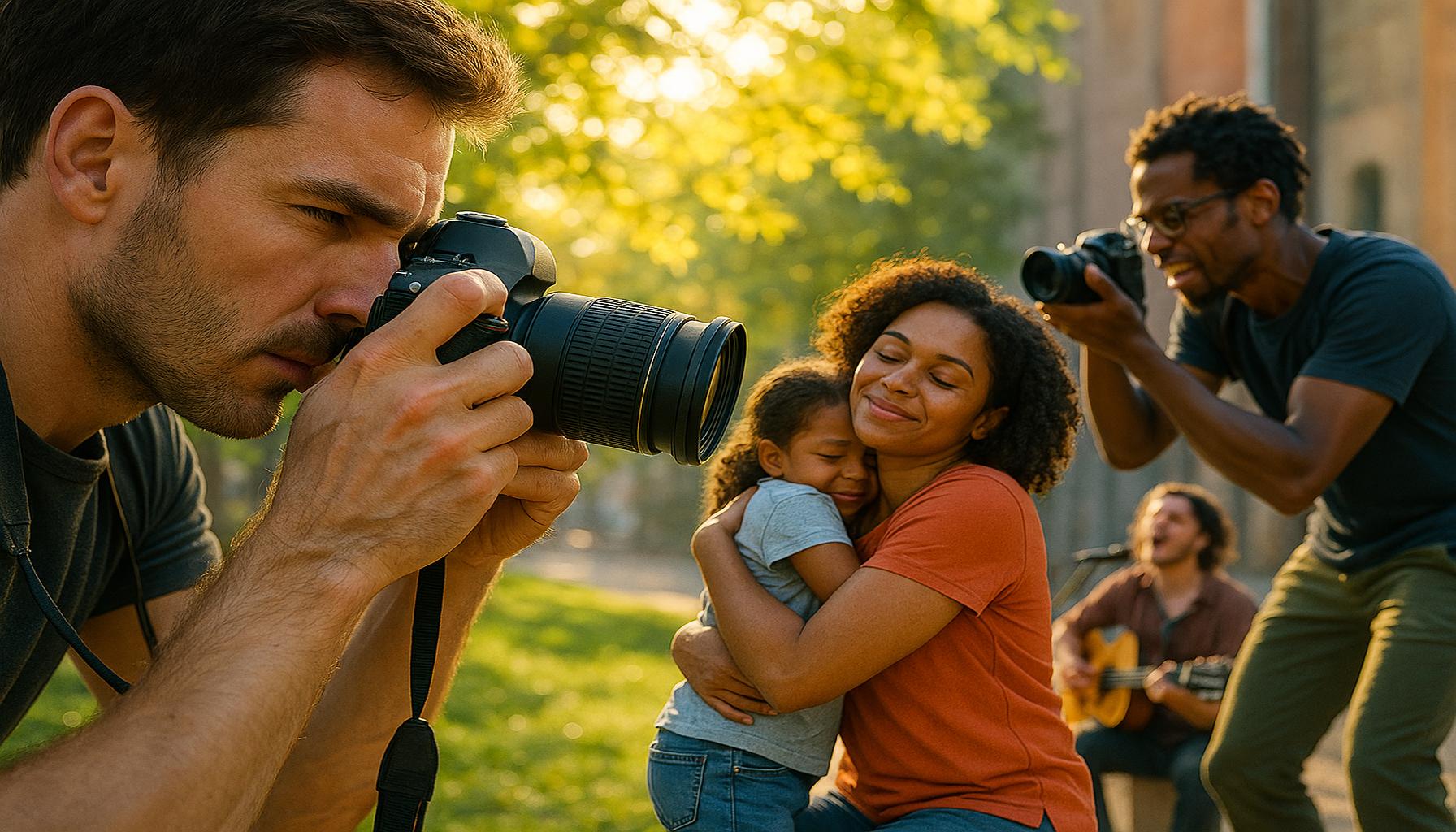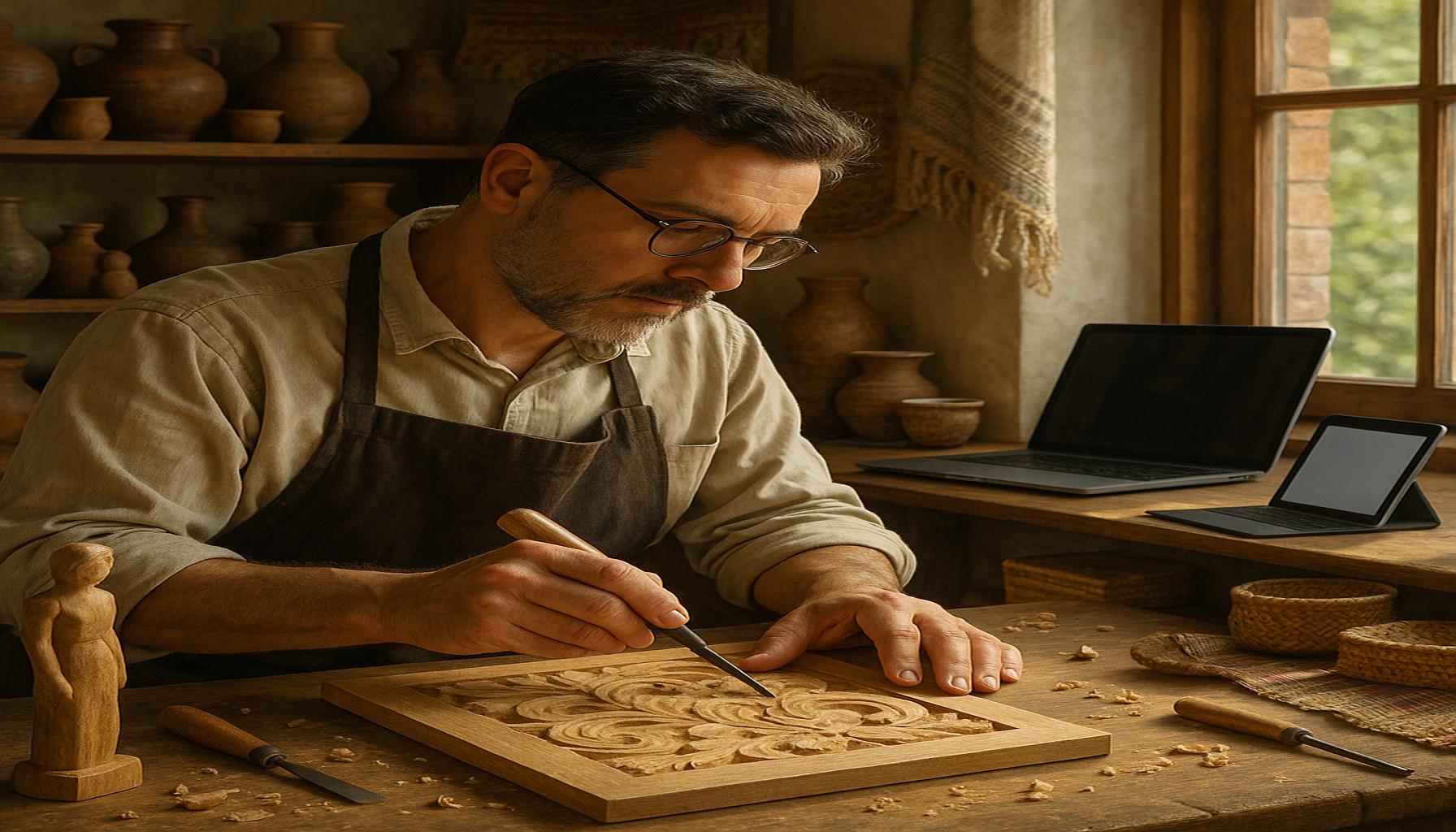Watercolor Painting Techniques for Beginners: Tips and Inspirations
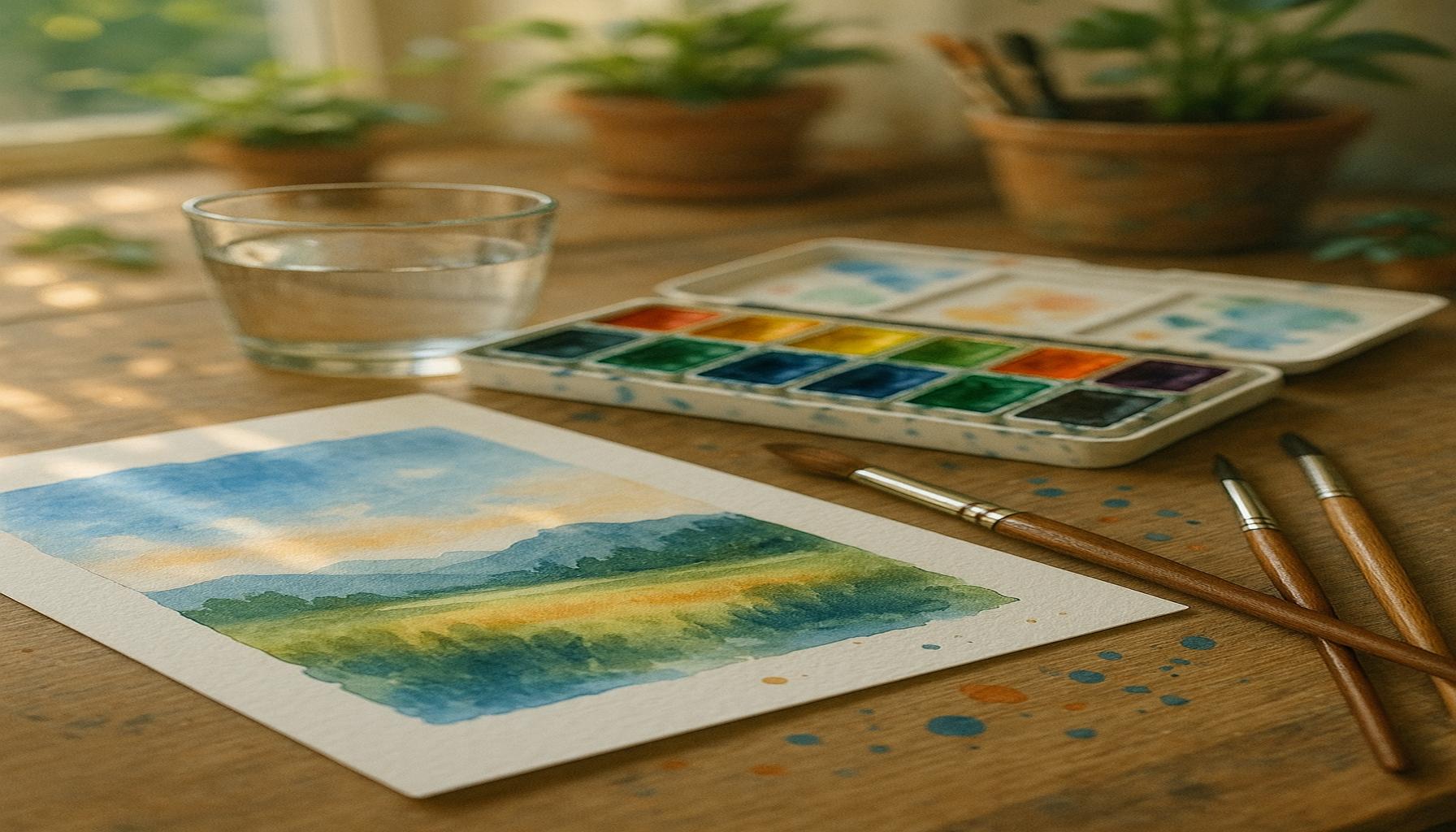
Exploring Essential Watercolor Techniques
Watercolor painting is a captivating medium that offers a unique blend of precision and spontaneity. For beginners eager to explore this beautiful art form, understanding the basic techniques is essential for a fulfilling creative journey. As you dip your brush into the vibrant pigments, a world of possibilities awaits.
In this guide, we will delve into essential watercolor techniques that every novice should master. These techniques are the foundation for creating stunning pieces that capture the fluidity and luminosity characteristic of watercolor.
- Wet-on-wet: This technique involves applying wet paint onto wet paper or wet paint. It allows colors to blend seamlessly, creating soft edges and beautiful gradients. For instance, painting a sunset with muted oranges and pinks can be achieved by layering colors while the paper is still wet, allowing them to mix and flow naturally.
- Wet-on-dry: In contrast to wet-on-wet, this method entails applying wet paint onto dry paper. It is crucial for achieving crisp lines and defined shapes. This technique is often used for painting detailed subjects such as flowers or architectural elements where precision is essential. You can enhance the intensity of colors by applying multiple layers of paint once the previous layer dries.
- Lift-off: This technique is used to remove excess paint from the paper to create highlights or corrections. By using a damp brush or a paper towel, you can gently lift the paint without damaging the underlying layer. This technique is particularly useful for adding texture to landscapes or creating the illusion of light on surfaces.
Additionally, we’ll share valuable tips to enhance your painting experience and boost your creativity:
- Choose quality supplies: Investing in good brushes and high-quality watercolor paper is vital. The right tools can make a significant difference in the outcome of your artwork. Brands like Arches for paper and Winsor & Newton for paints are highly recommended in the watercolor community.
- Practice regularly: Consistency is key to mastering watercolor techniques. Set aside time each week to practice different styles and techniques. This can include sketching simple objects or experimenting with color mixing.
- Experiment: Don’t be afraid to try new styles and techniques. Many renowned watercolor artists often blend traditional methods with contemporary styles, allowing for a personal artistic voice. Consider exploring abstract modern watercolor, combining mixed media, or even using unconventional tools like sponges or salt for unique textures.
As you embark on your watercolor journey, inspiration is key. Draw upon nature, everyday scenes, or even your imagination. Whether it’s a vibrant flower garden, the serene landscape of a national park, or a bustling cityscape, every subject offers an opportunity for expression. With a splash of creativity and a palette of colors, you are on the brink of creating stunning artworks that reflect your unique perspective.
By embracing these foundational techniques and allowing your artistic voice to flourish, you can unlock the true potential of watercolor painting. So gather your supplies, unleash your imagination, and start your journey into this enchanting world of color.
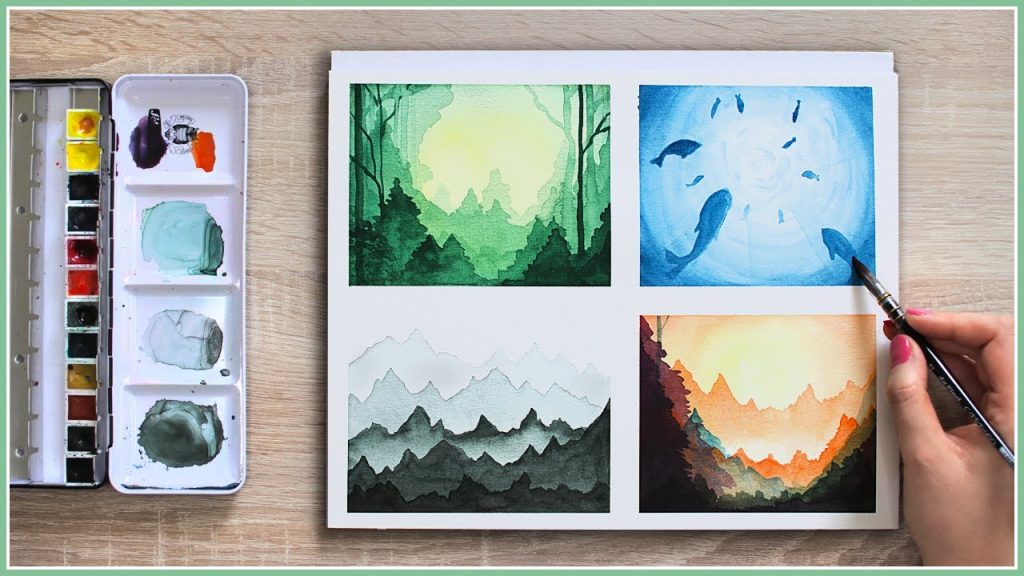
DISCOVER MORE: Click here to enhance your creative skills
Understanding the Basics: Building Your Foundation
As you venture into the world of watercolor painting, it is crucial to build a strong foundation by mastering the fundamental techniques. These foundational skills will not only enhance your ability to create beautiful works of art but also boost your confidence as a budding artist. Let’s explore some essential watercolor techniques that every beginner should understand to get started on this colorful journey.
The Power of Color Mixing
One of the most vital skills in watercolor painting is the ability to mix colors effectively. Understanding color theory is essential, as it helps you create harmonious palettes and avoid muddy colors. Begin by experimenting with primary colors—red, blue, and yellow. By mixing these, you can create secondary colors like green, orange, and purple. Practice creating variations by adjusting the ratio of each color, allowing you to discover a range of tones and shades.
Additionally, try out color gradients to create smooth transitions between colors. This technique will be particularly useful when painting skies or water, where a seamless flow of color can bring depth and realism to your artwork.
Brush Techniques: The Key to Texture
The type of brush used can greatly impact the texture and detail in your painting. Beginners should consider investing in a variety of brushes—round, flat, and filbert—to experiment with different effects. Here are some common brush techniques to explore:
- Dry brushing: This technique involves using a dry brush with minimal paint to create a rough texture. Ideal for adding detail to grass or tree bark, it can lend a rustic feel to your artwork.
- Feathering: This involves lightly dragging a wet brush across dry paint to create soft, feather-like edges. It’s particularly effective when painting soft petals or delicate features.
- Splattering: To create a dynamic background or add an element of movement, use a brush to flick or splatter paint onto your paper. This technique can add an exciting layer of spontaneity to your pieces.
Understanding Paper Types
The paper you choose can make a significant difference in your watercolor experience. Watercolor paper comes in various weights, textures, and surfaces, which can impact how paint interacts with the paper. Here are some types:
- Rough: This has a textured surface that provides beautiful texture and is ideal for creating expressive strokes.
- Cold-pressed (NOT): This is popular among watercolors due to its slight texture, providing a balance between smooth and rough surfaces.
- Hot-pressed: This smooth paper is great for fine details but may not hold watercolor as well as others.
Choosing the right paper can enhance your painting experience, so consider purchasing a small pad of each type to see which you prefer before committing to a larger size. As you dive into the practice of watercolor painting, keep these techniques and tips in mind. Building these essential skills will set you on a path toward creating stunning artworks that reflect your individuality and creative vision.
Exploring Watercolor Techniques
Watercolor painting is not just a medium; it is a world of possibilities that invites beginners to unleash their creativity. By experimenting with various techniques, artists can develop their unique styles and approaches to create stunning works of art. Here are some essential watercolor techniques that every beginner should explore:
Wet-on-Wet Technique
The wet-on-wet technique involves applying wet paint onto a wet surface, which allows colors to blend and bleed into one another, creating soft edges and beautiful gradients. This technique is perfect for creating backgrounds or abstract pieces, as it encourages spontaneity and experimentation. Beginners can start by wetting the paper and then dropping in colors to see how they interact.
Wet-on-Dry Technique
In contrast to wet-on-wet, the wet-on-dry technique involves painting wet pigment onto dry paper. This method produces sharper edges and more defined shapes, making it ideal for detailed work. Beginners can practice this technique by painting small shapes or lines to understand how the paint behaves on dry surfaces. Using this technique in combination with wet-on-wet can yield dynamic results.
Layering
Layering is one of the essential techniques in watercolor painting. It involves building up color gradually using transparent washes. This allows for depth and richness in the artwork. Beginners should start with light washes and gradually add more layers as they become comfortable with the medium. This technique emphasizes the importance of patience, as each layer needs to dry before applying the next.
Salt Texture
A fun and engaging technique, adding salt to wet paint can create interesting textures. As the salt absorbs the water, it draws pigment away from the paper, leaving behind beautiful patterns. Beginners can experiment with this technique to add unique elements to their work, particularly for landscapes or skies.
Creating a Watercolor Table of Techniques
To enhance learning, here is a corresponding HTML table on watercolor techniques that can benefit beginners:
| Technique | Description and Benefits |
|---|---|
| Wet-on-Wet | Creates soft, blended colors ideal for backgrounds. |
| Wet-on-Dry | Produces sharp edges for detailed artwork. |
| Layering | Builds depth and enhances color richness. |
| Salt Texture | Adds unique textures and patterns to your painting. |
These techniques not only elevate the art of watercolor painting but also nurture the artist’s growth. As beginners explore and practice, they unlock their creative potential, discover their unique style, and enjoy the process of painting with watercolors. The journey is one of joy, inspiration, and self-expression, encouraging artists to constantly innovate and experiment with what watercolors can offer.
DIVE DEEPER: Click here to discover the healing power of art in therapy
Exploring Advanced Techniques: Elevating Your Artistry
Once you have mastered the foundational skills of watercolor painting, it’s time to explore advanced techniques that can elevate your work and expand your creative horizons. These techniques will not only enhance the visual appeal of your artwork but also allow you to express your personal style and artistic voice more fully. Let’s delve into some techniques that can transform your watercolor paintings from basic to breathtaking.
Lifting and Lifting Techniques
The ability to lighten or remove paint once it has dried is a valuable skill for watercolorists. This process, known as lifting, allows you to create highlights or correct mistakes effectively. To lift color, use a damp brush or a clean sponge to gently scrub the area you wish to lighten. Alternatively, you can use paper towels to dab at the paint, absorbing the color without damaging the paper.
This technique is particularly useful when painting clouds or other soft elements where the interplay of light and shadow is critical. For example, if you are painting a sunset, you can lift some of the paint from the sky to create beautiful, wispy clouds that reflect the light from below.
Glazing: The Layered Approach
Glazing involves applying a transparent layer of paint over dried layers, enriching the colors and creating depth in your artwork. The key to successful glazing is to ensure that the first layer of paint is completely dry before applying the glaze. This technique allows you to modify colors without losing the details of the underlying layers. You can also create vibrant landscapes or portraits by combining different hues through glazes.
For instance, painting a base layer of soft green for grass and then glazing with a rich yellow ochre can create a brilliant sunny effect. Experiment with varying levels of transparency to see how glazing can enhance your color palette and bring your paintings to life.
Masking Fluid: Preserving White Spaces
Masking fluid is a fantastic tool for beginners wanting to preserve white areas in their paintings. This liquid is applied to areas where you want to prevent paint from settling, allowing you to create highlights or detailed patterns. Once the masking fluid is dry, you can paint over it, and when your artwork is complete, simply rub it off to reveal the untouched white paper underneath.
This technique is particularly useful for creating the dazzling sparkles of light on water or the fine details of a flower. When applying masking fluid, be sure to use an old brush, as it can damage your fine brushes when removed.
Incorporating Mixed Media
As you become more comfortable with watercolor painting, don’t hesitate to experiment with mixed media techniques. Incorporating materials such as ink, pastel, or even gold leaf can add texture and interest to your paintings. For example, using ink for detailed outlines can make your subject pop against a watercolor backdrop, creating a striking contrast and depth.
Mixed media also provides an exciting avenue to express your creativity. Try using watercolor alongside collage materials, fabric, or even found objects to create unique and personal artworks that tell your own story.
Keep in mind that experimenting with these advanced techniques will not only challenge you as an artist but also provide you with the tools to explore your style and preferences. By integrating these techniques into your practice, you’ll discover a wealth of opportunities for artistic expression that goes beyond simple brushwork.
DISCOVER MORE: Click here to learn about the healing power of creativity
Conclusion: Embrace Your Creativity with Watercolor Techniques
In conclusion, watercolor painting offers a rich and vibrant medium for artists, especially beginners eager to explore their creative potential. By mastering fundamental techniques and venturing into advanced methods such as lifting, glazing, and utilizing masking fluid, you can significantly enhance the depth and appeal of your artworks. Each technique not only provides practical skills but also opens doors to expressing your unique perspective and emotions on paper.
As you experiment with these methods, remember that creativity knows no bounds. Embrace the process of creating, allowing yourself to make mistakes and learn from them. Integrating mixed media elements can add unexpected texture and dimension to your pieces, helping you cultivate a distinctive artistic voice.
Don’t hesitate to seek inspiration from various sources—nature, fellow artists, or even personal experiences can ignite your imagination and fuel your passion for watercolor painting. As you continue to grow, consider connecting with local art communities or online platforms to share your journey and gain valuable feedback.
Ultimately, your path in watercolor painting is a personal adventure. So pick up your brush, let the colors flow, and above all, have fun as you create captivating works of art that reflect your unique viewpoint. As you explore new techniques and unleash your creativity, you will find that the world of watercolor painting is not just a skill to learn, but an exciting opportunity to share your vision with the world.

